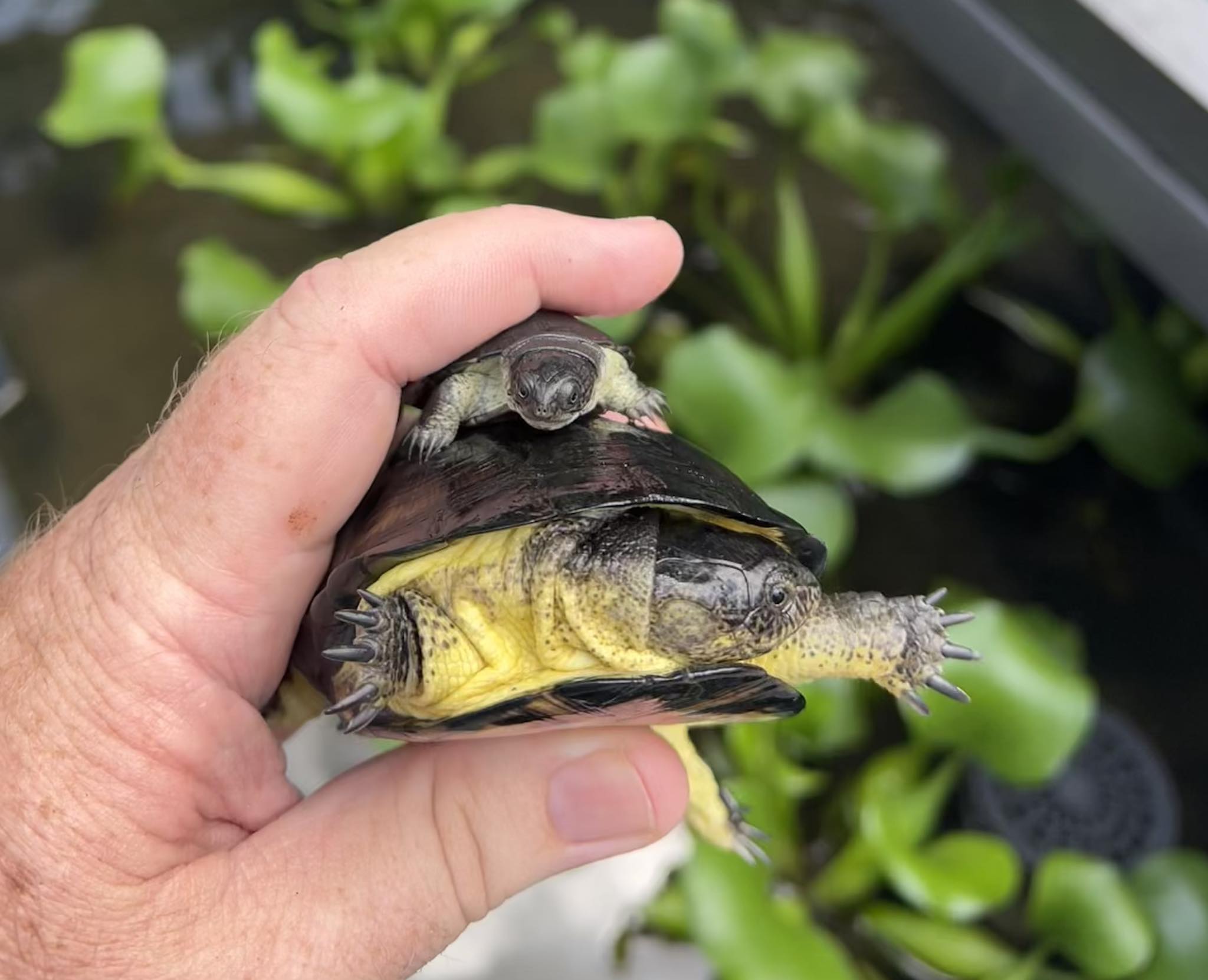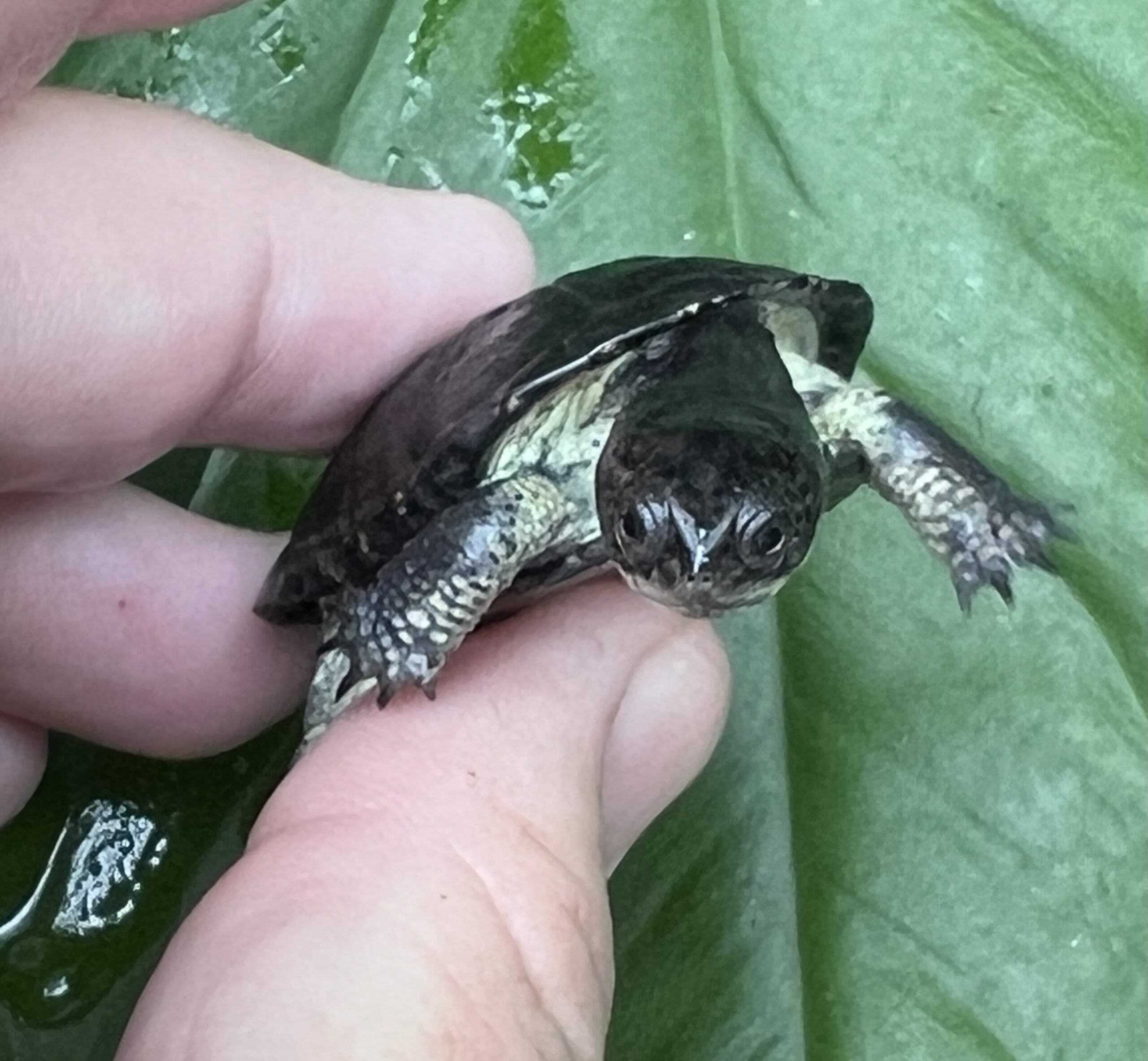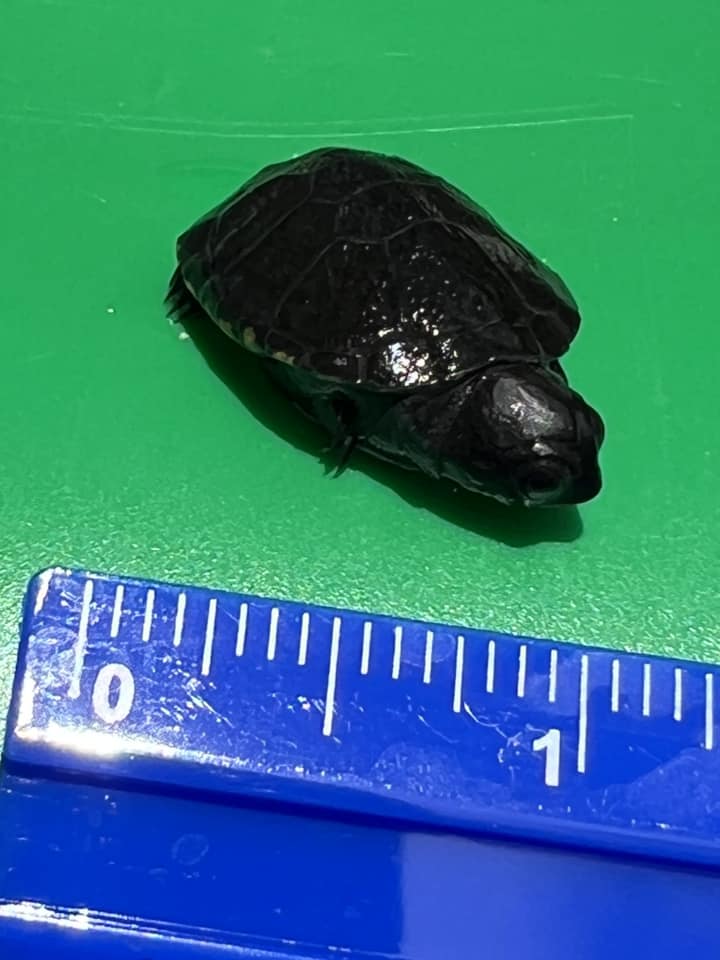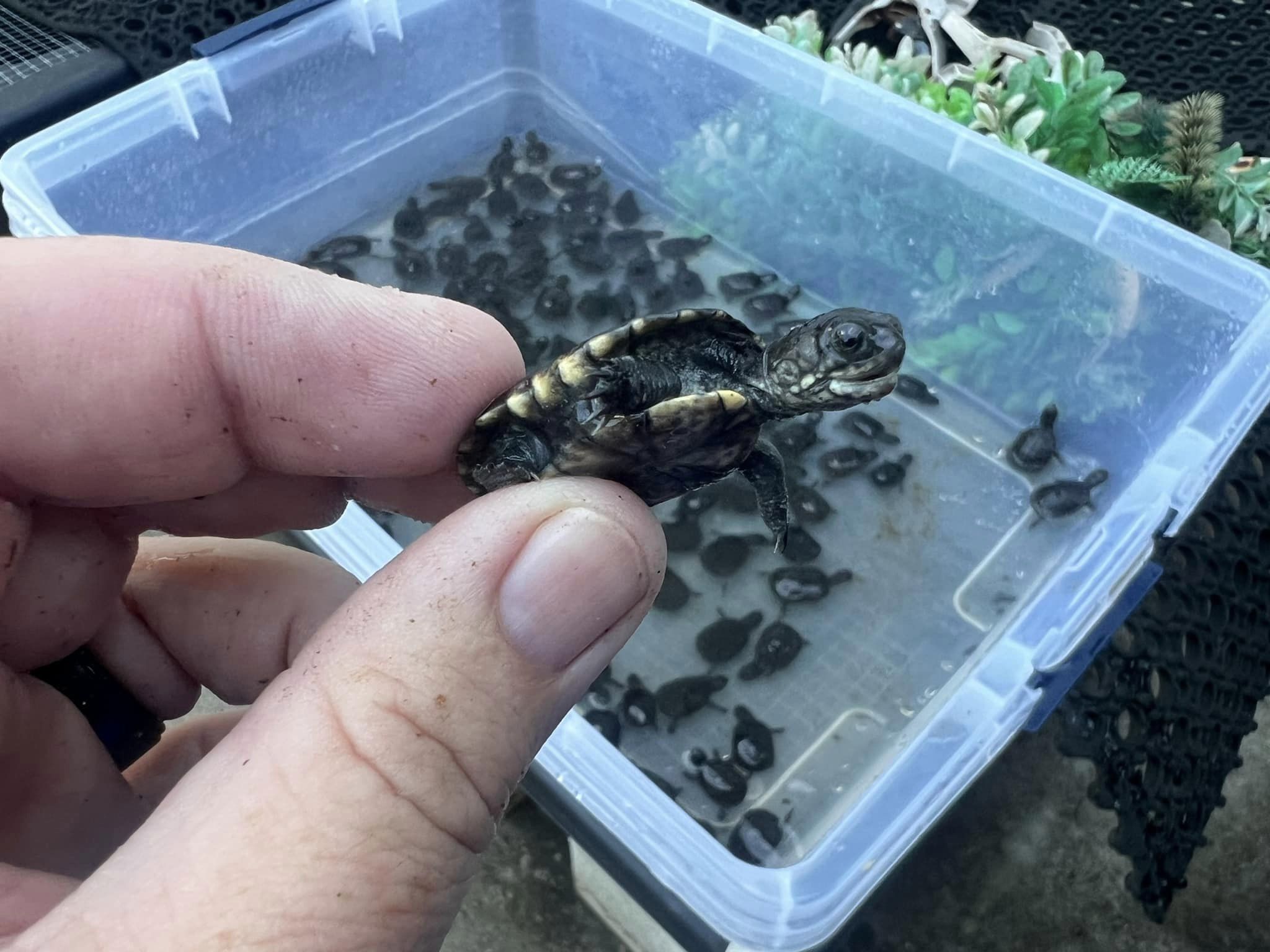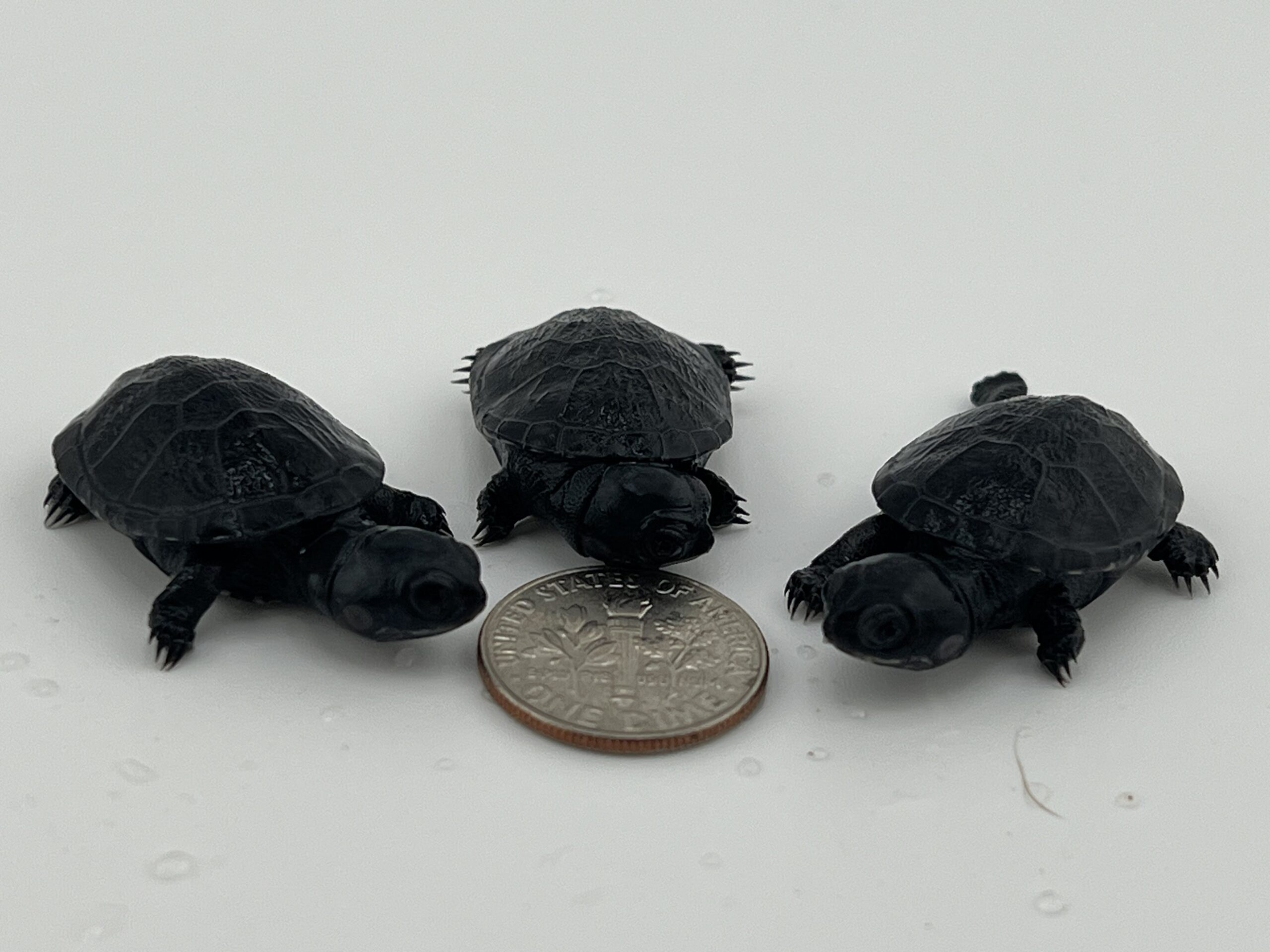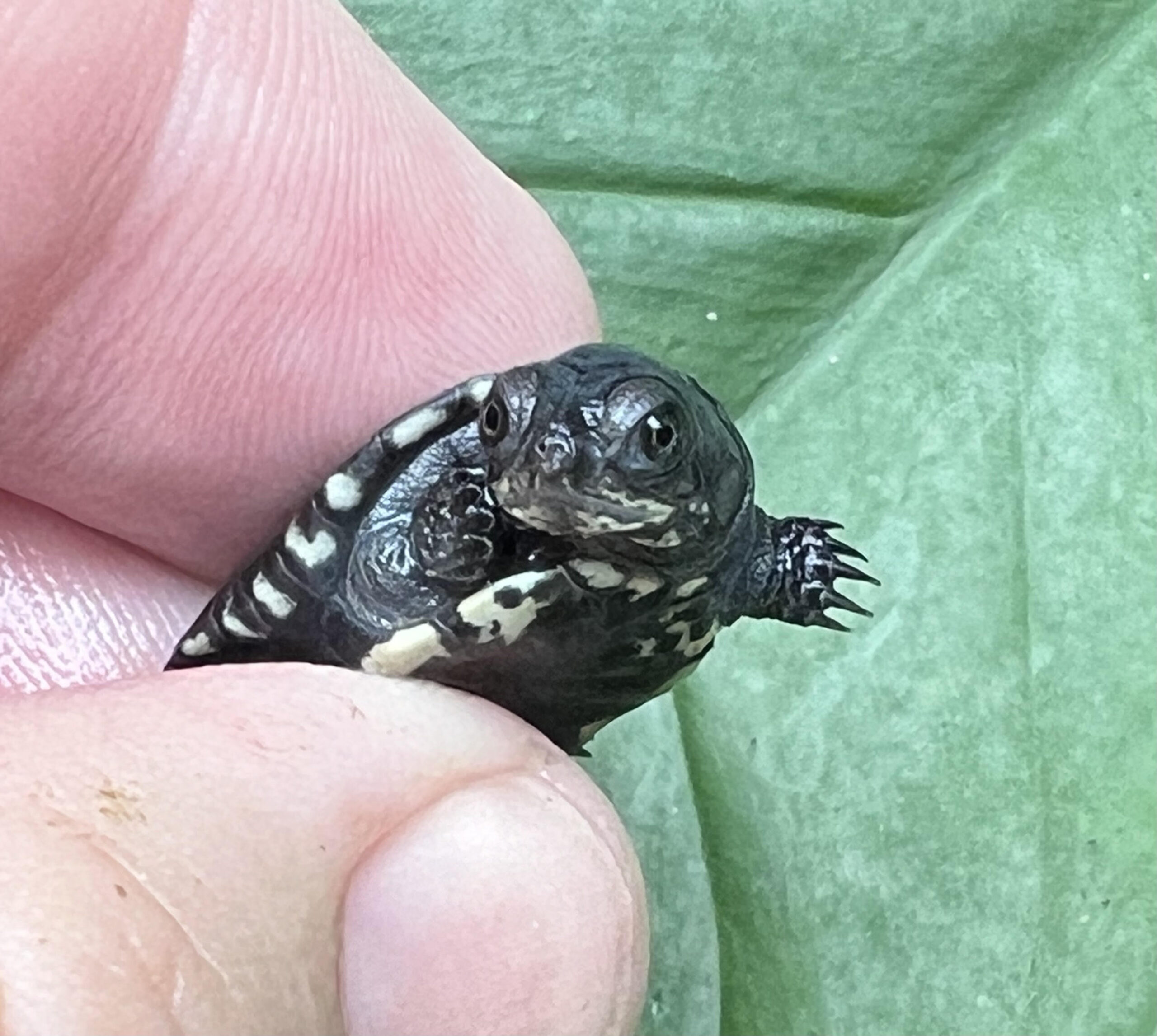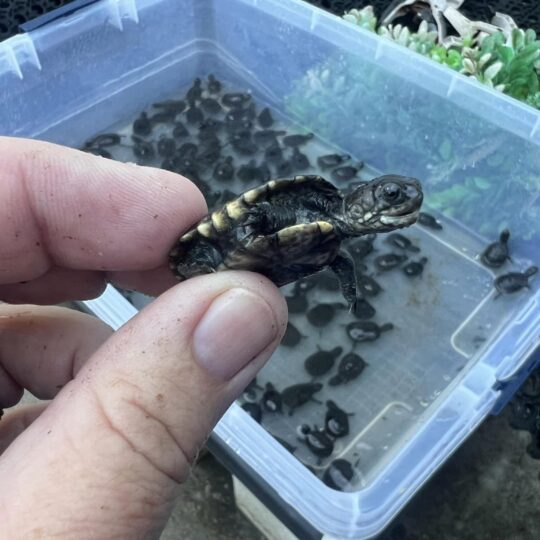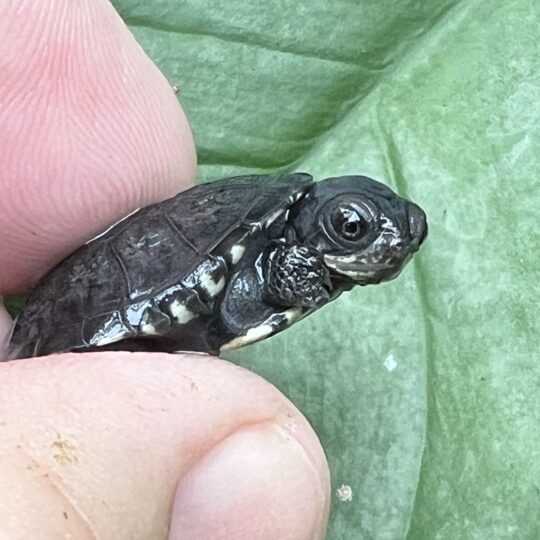Physical Characteristics:
- Size: Adults typically reach a length of 3 to 4 inches (7.5 to 10 cm), making them one of the smallest turtles.
- Shell: Their carapace is dark brown to black, often with a slightly domed shape and a smooth texture. The plastron (underside) is usually lighter in color.
- Appearance: They have a compact body with webbed feet, which helps them swim efficiently. Their heads are relatively large compared to their body size, with a pointed snout.
Behavior and Temperament:
- African Dwarf Mud Turtles are generally shy and prefer to hide in their environment.
- They are primarily aquatic, spending most of their time in water but also need access to land for basking and resting.
- These turtles are not overly social and are best kept individually or in a species-specific tank to avoid stress.
Habitat Requirements:
- Tank Size: A minimum tank size of 20 gallons is recommended for one turtle. However, a larger tank will provide a better environment, especially if more than one turtle is housed.
- Water Quality: Clean, filtered water is crucial. The water should be shallow, not exceeding 6 to 8 inches deep, with areas for the turtle to climb out and bask.
- Temperature: Maintain a water temperature of 75-80°F (24-27°C) and a basking spot of 85-90°F (29-32°C).
- Substrate: Use smooth, small gravel or sand to avoid injury to the turtle’s delicate skin and shell.
- Lighting: Provide UVB lighting to help the turtle synthesize vitamin D3, which is essential for calcium absorption and shell health.
Diet:
- African Dwarf Mud Turtles are omnivores. Their diet should consist of a mix of aquatic turtle pellets, insects (like crickets and mealworms), and occasional leafy greens.
- They may also enjoy small fish or shrimp as treats.
- Ensure that their diet is varied and balanced to keep them healthy.
Lifespan: With proper care, the African Dwarf Mud Turtle can live up to 20-30 years, making it a long-term commitment.
Care Level:
- Beginner-Friendly: While their small size makes them easier to house, they still require specific care regarding water quality, diet, and habitat setup.
- Maintenance: Regular water changes and monitoring of water quality are essential. They also need a proper diet to avoid nutritional deficiencies.
Why Choose an African Dwarf Mud Turtle as a Pet?
- Compact Size: Ideal for those who have limited space.
- Unique Appearance: Their small stature and distinctive look make them an attractive pet.
- Manageable Care: With the right setup, they are relatively easy to care for.

